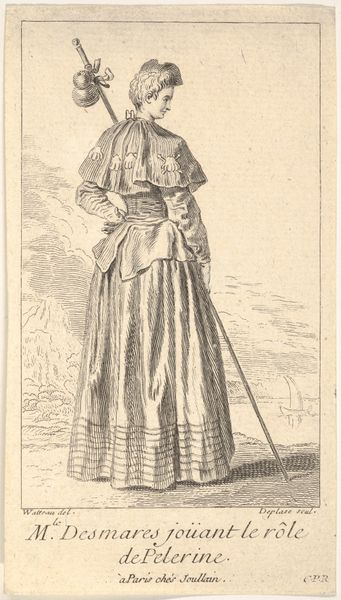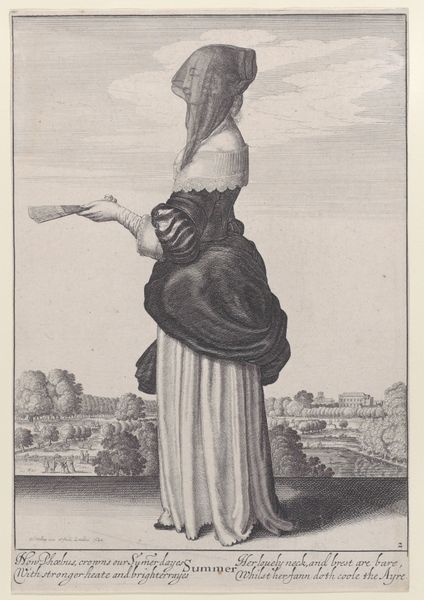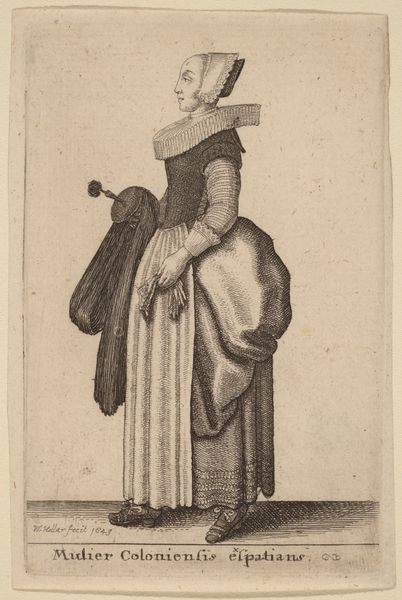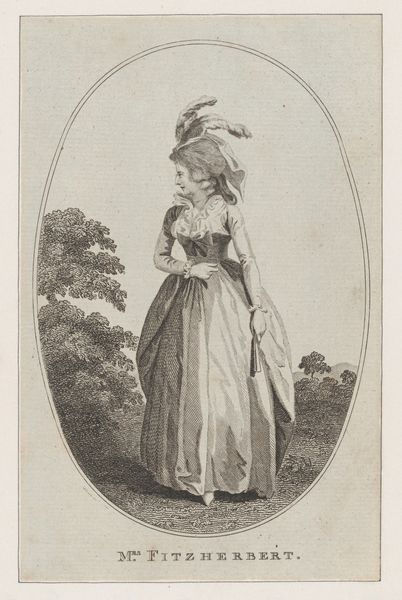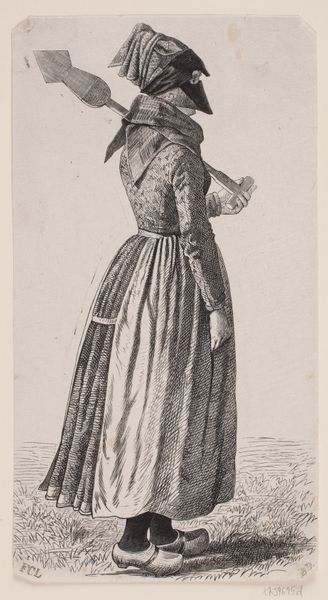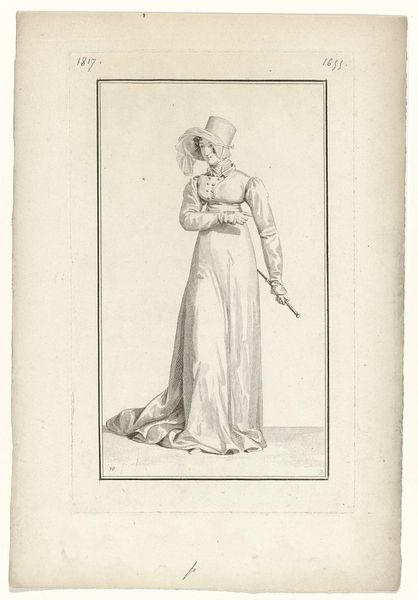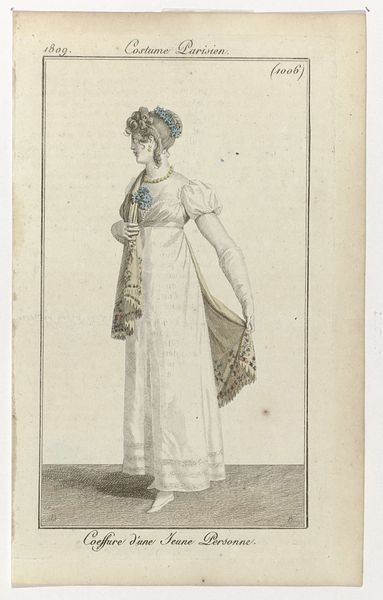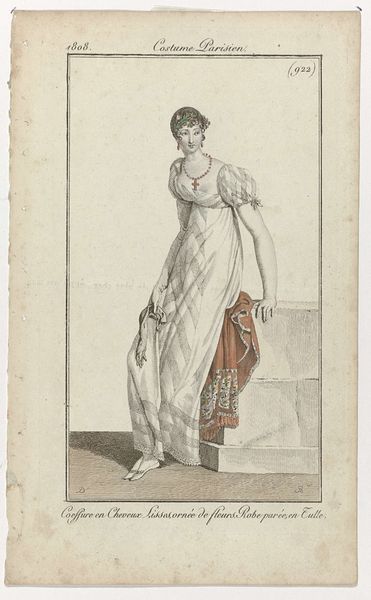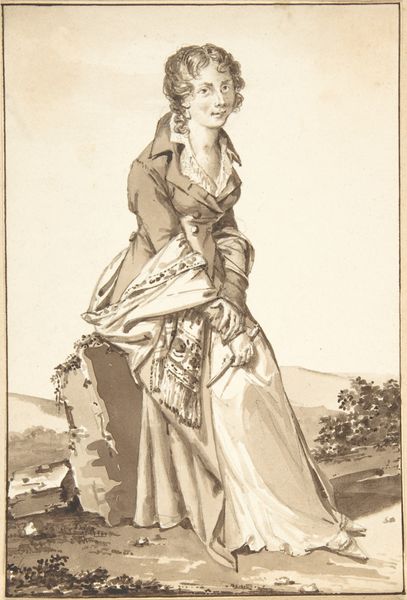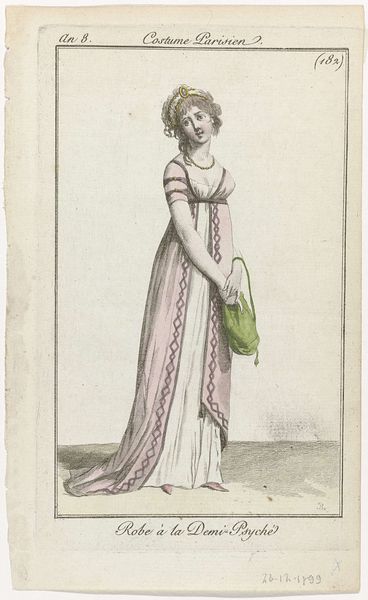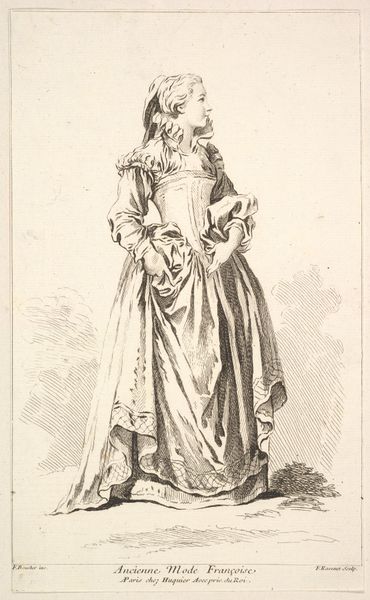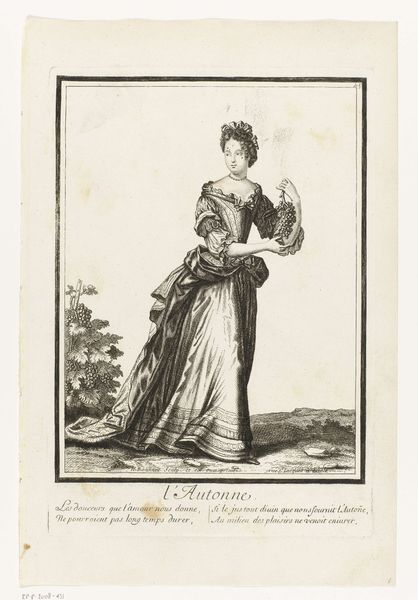
drawing, print, engraving
#
portrait
#
drawing
#
baroque
# print
#
caricature
#
genre-painting
#
engraving
Dimensions: Sheet: 10 5/16 × 7 1/16 in. (26.2 × 18 cm)
Copyright: Public Domain
Editor: Here we have Wenceslaus Hollar's "Autumn," created between 1643 and 1644. It's an engraving, and the figure almost seems staged, presented for our observation. What layers can we unpack in this piece? Curator: That staged presentation is key. Consider how the print medium itself democratized imagery, making representations of status and ideals accessible to a wider audience. How might this woman embody or subvert those ideals, particularly given the sociopolitical upheavals of the mid-17th century? Editor: Subvert, perhaps in that her dress is simple and practical, without being overtly ornamental, a modest statement during the baroque period? Curator: Precisely! This 'simplicity' can be read as a commentary. Clothing, then as now, signified identity and allegiance. Her relative lack of ostentation may subtly critique the excesses of the elite or perhaps aligns her with a particular religious or political faction. The artist, Hollar, was working during a tumultuous time in England, the English Civil War. How might anxieties about class, gender roles, and societal change manifest in an image like this? Editor: The poem below the figure mentions “gathering” so, is the intention more about the fleeting nature of youth than anything overtly political? Curator: Yes, but even these reflections on mortality aren’t apolitical. Consider the context of the plague, the wars. There is a strong, implicit dialogue with gender and class; The "gathering" she must do can be interpreted in many ways – domestic, societal, or related to her own safety. Do you agree? Editor: That’s a perspective shift. The poem’s meaning deepens when the surrounding social pressures and artistic style intermingle! Curator: Absolutely! It's about unearthing the multiple, often conflicting, narratives embedded in visual culture, particularly how notions of beauty, duty, and temporality intersect with power dynamics. Editor: So even a seemingly straightforward portrait invites interrogation of its context, medium, and subject to better comprehend it as a cultural object. Thank you. Curator: Indeed! It shows the power of art to make us think critically about ourselves and the world we inhabit.
Comments
No comments
Be the first to comment and join the conversation on the ultimate creative platform.
